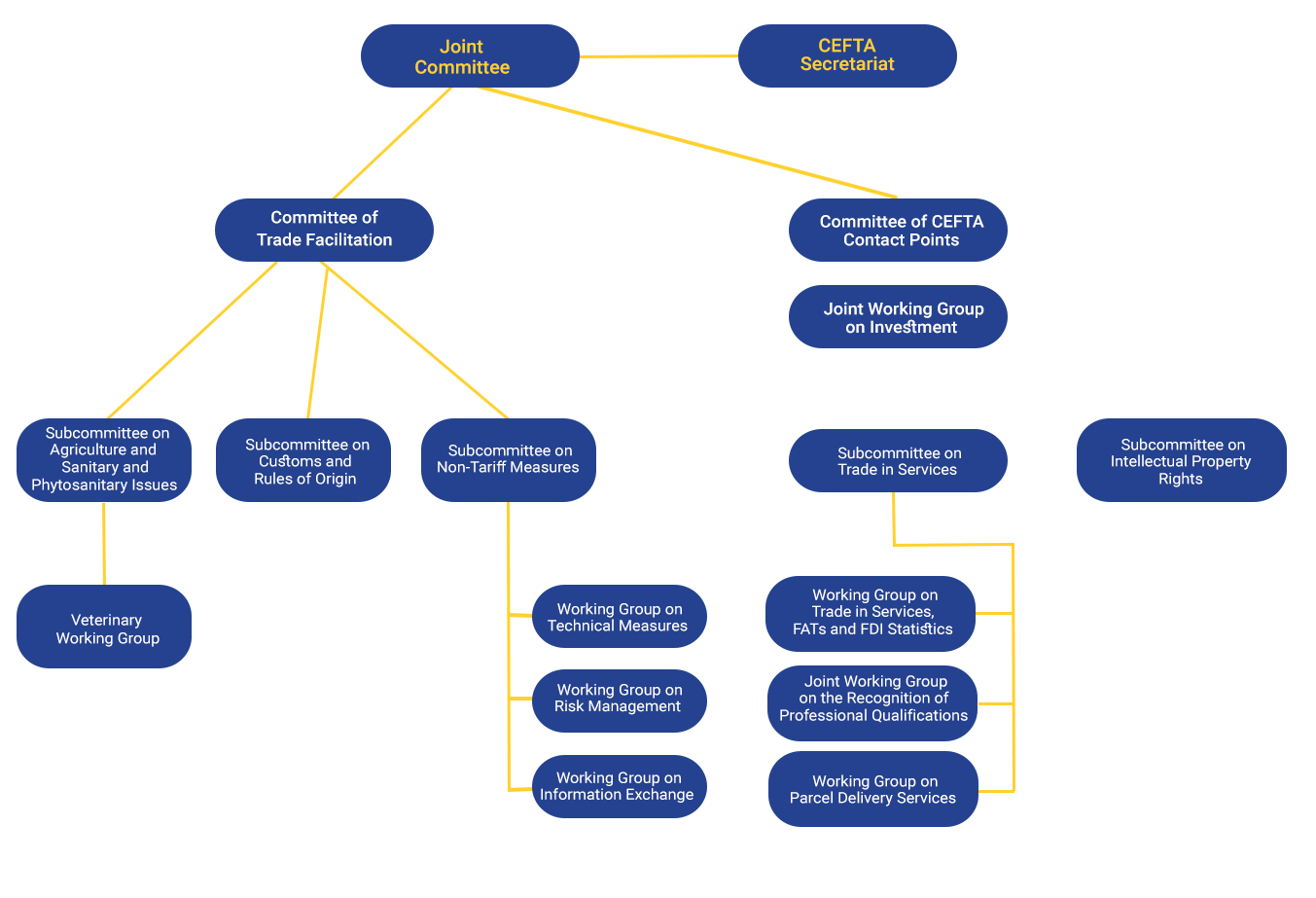Central European Free Trade Agreement (CEFTA) aims at enhancing trade in goods and services, seeks to eliminate trade barriers between the Parties and attract investment to the region through fair, stable and predictable trade rules. The Agreement aims to harmonize its Parties’ regulatory framework with the EU and international standards. It also covers issues such as the protection of intellectual property rights, competition rules and state aid.
Building on the original CEFTA, substantially enlarged and modern CEFTA was signed in December 2006 by Albania, Bosnia and Herzegovina, Bulgaria, Croatia, North Macedonia, Moldova, Montenegro, Romania, Serbia and UNMIK/Kosovo. Romania, Bulgaria and Croatia have withdrawn from CEFTA on their accession to the EU.
Mission
CEFTA contributes to economic development of the Parties, creates an attractive environment for investment, provides benefits to its citizens and businesses and supports the Parties’ integration into the EU.



